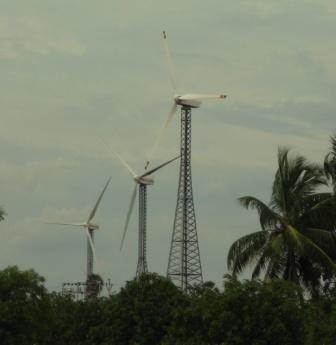Harmonic Turbine Tidal Hotel
Harmonic Turbine Tidal Hotel provides energy for the generation of electricity. The main objective was to redefine the hotel’s typology including the renewable energy to sustain the environment. This hotel project is among the last of one of those three tidal projects that have highlighted the importance of inter-disciplinary dialogue between engineering, architecture, industrial design, and renewable energy as per v2com.

The hotel is located on Yalong Bay, on the island of Hainan in the South China seas. Along the bay’s coastline there are sheltered areas but also sections which are a high-energy site exposed to winds and high waves, this is where the harmonic turbine hotel sits, partly anchored into the coastline’s rock with its elements free to gently move with the tide. Revolving water turbines are partially buried in the sand and respond to tidal waves creating a sustainable infrastructure as part of the hotel’s design.
The primary objective of this hotel is to link hotel design and program with renewable energy. In order to combine renewable energy, mechanical and industrial turbine engineering is used. A sustainable hotel typology is built up by this project and it also includes some multidisciplinary aspects that are involved in the future of hotel design. Gone are the days when hotels will only serve as a consumer and catering industry, as they will soon include interior design, lifestyle and will soon prove to be energy producing self-sufficient typology in the built environment. Despite the fact that hotels depend on peak holiday seasons for most of their profit, these hotels are of vision to produce more profit for the whole year. Additionally, it would also contribute to the environment as it will produce usable energy for the surrounding area.
What’s better than knowing that soon hotels will support its immediate environment besides serving hotel caters?
A new type of hotel is in the vision to be developed by Margot Krasojević, which will contribute to the environment by generating clean reusable energy. Harmonic Turbine Hotel is an energy plant as well as wellness facility. This hotel has used all the building material and technology manufactured from the environmental-friendly materials.
The pipe water turbines are part of the hotel landscaping, they are semi-buried into the sand but exposed to the South China sea which washes over the turbines in order to produce and store energy back into the hotel and the national grid, which will create a step-up energy production hotel. It’s not only contributing to the environment, but it also works as a capacitor as the entire scheme slightly moves in the tide. Pipe water turbines follow a spiral of paths into and around the hotel. The layout of these tidal turbines resembles natural tidal sand ripples and creates enclosures like the rock pool bays for guests.
The idea to design a hotel which sinks into the sea to catch the tide and on the same side being able to sway in the current came from rock pools and tidal power. The complete experience comes from surfing, out of which some of the sections of the hotel is submerged during high tide.
Two-interlocking steel frame made from the aluminum-clad elements are involved in the hotel’s architecture. These elements are quite lightweight as they gently swing with the tide but a benefit is that they didn’t break.
The main entrance platform is accessed by stairs and a ramp leading to the turbine hotel’s foyer or bedrooms via an entrance hatch, which descends into the viewing chamber that is partially submerged. The harmonic turbine hotel foyer leads from the entrance hatch into the submerged viewing chamber which is connected to the 30 en-suite spa bedrooms, each bedroom has a privacy glass-clad panel which makes the guests feel as though they are in a partly submerged submarine, waves crash against the room windows with the tide whilst water turbine rock pools define private guest pools.
Using partly exposed open foundations, this hotel is bounded into the sand. This movement helps tackle renewable energy more effectively.
As an essential part of the designing process, Margot Krasojević has been focusing on developing a dialogue between geometry, architectural form, sustainability, and smart materials. He has kept in mind the sustainable technology in prescribing the terms of the architectural design criteria. The main focus of the studio’s research and design approach has always been on the renewable energy and optimization of collaboration between typology, program, and architecture. Margot has kept architecture a basic tool to explore environmental change and renewable energy sources after completing her Masters and Ph.D. in 1997 and 2003.
Image credit: Margot Krasojevic Architects via v2com


